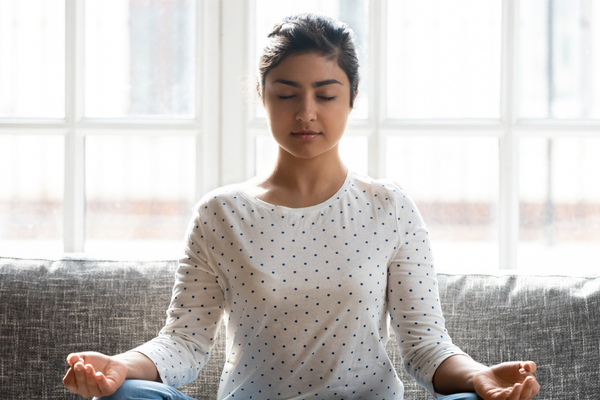
Optimizing exercise throughout the menstrual cycle: harnessing the power of hormone fluctuations

Understanding how hormonal fluctuations affect the body during the menstrual cycle can empower women to optimize their exercise routines for better performance and overall well-being. By aligning workouts with the hormonal changes that occur throughout the cycle, women can achieve peak performance, enhance recovery and maintain long-term fitness goals. This post will explore the phases of the menstrual cycle, the associated hormonal shifts and how to tailor your exercise routines accordingly.
The menstrual cycle is divided into four phases: menstrual, follicular, ovulatory, and luteal. Each phase is characterized by unique hormonal patterns that influence energy levels, strength, endurance and mood. Once you understand these fluctuations, it can help you plan workouts that align with your body’s natural rhythms.
Early Follicular Phase (Menstruation) (Days 1-5):
- Overview: This phase begins when an egg released during your previous cycle is not fertilized, resulting in the shedding of the uterine lining (endometrium). Most people bleed for between 3 to 5 days. You may experience uterine cramps, low back pain, breast tenderness, bloating, headaches and fatigue.
- Hormonal profile: Low estrogen and progesterone levels. Follicle-stimulating hormone (FSH) release begins, stimulating ovaries to produce follicles, each containing an egg.
- Exercise recommendations: During menstruation, many women experience lower energy levels and may prefer opting for gentle, low-intensity aerobic exercises such as walking, swimming or cycling. Participating in higher intensity aerobic exercises, such as spin classes or other cardiovascular exercise, can contribute to endorphin release (a natural pain reliever!) and give you a boost in energy levels. Research has found that aerobic exercise significantly reduces the severity of premenstrual symptoms, including pain, mood changes and fatigue, suggesting that engaging in regular moderate intensity physical activity during menstruation can be beneficial [1]. Activities like yoga or Pilates can also be helpful for reducing menstrual discomfort and promoting relaxation.
Follicular Phase (Days 6-14):
- Overview: The lining of your uterus (endometrium) is thickening and follicles are growing on the surface of the ovaries. During this phase, your energy levels will likely increase.
- Hormonal profile: Steadily rising estrogen levels, while progesterone remains low. FSH continues to increase to contribute to follicular maturation.
- Exercise recommendations: The follicular phase is characterized by increasing estrogen levels, leading to higher energy, improved mood and greater strength. This is the optimal time for high-intensity workouts such as strength training, HIIT (high-intensity interval training) and endurance exercises. The body’s ability to build muscle and recover quickly is enhanced during this phase.
Ovulatory Phase (Approximately Day 14):
- Overview: One of the developing follicles will rupture, releasing a mature egg. Energy levels remain high. Around the time of ovulation, some women experience a dull pain in their lower abdomen, which may precede or follow the rupture of the follicle.
- Hormonal profile: Peak estrogen levels result in a surge in FSH and luteinizing hormone (LH), triggering the release of a mature egg from your ovary. During this surge of hormones, estrogen levels decrease and progesterone levels start to increase.
- Exercise recommendations: During the ovulatory phase, women often experience peak physical performance, including increased strength, endurance and coordination [2]. This phase is ideal for high-intensity workouts, sports or aiming for a personal record!
- Luteal Phase (Days 15-28):
- Overview: The lining of the uterus continues to thicken in preparation for possible implantation of the egg released during ovulation, which will travel through the fallopian tubes to the uterus during this phase. During this phase, if the egg is fertilized by sperm and implants or attaches itself to your uterine wall, you will become pregnant. Towards the end of the luteal phase, if you are not pregnant, you may begin to experience symptoms such as menstrual pain, breast tenderness, bloating, headaches and fatigue.
- Hormonal profile: Progesterone continues to increase to assist in thickening and preparing the uterine lining for a possible pregnancy. If pregnancy does not occur, estrogen and progesterone levels will decrease, leading to the shedding of the endometrium.
- Exercise recommendations: The luteal phase is often associated with increased fatigue, mood changes, and reduced physical performance. Women tend to report higher perceived exertion during exercise in this phase.[3] The body may also require more rest, so incorporating active recovery days is important
By understanding and aligning exercise routines with the hormonal fluctuations that occur throughout the menstrual cycle, women can optimize their workouts for better performance and overall health. Understanding your body’s natural rhythms and what to expect with each phase of your menstrual cycle helps you to grasp the body’s changing needs, whether it’s pushing for personal bests during the follicular and ovulatory phases or focusing on recovery and lighter exercise during the menstrual and luteal phases.
If you are finding that symptoms during your menstrual cycle are affecting your ability to feel and perform your best, a pelvic health physiotherapist may be able to help you to identify and manage your symptoms.
A Lifemark physiotherapist can help guide you through lifestyle and exercise routines, postural education, breathing techniques and pain management strategies. Check out our locations page to find a clinic near you or book online to schedule an appointment.
This article was written by Emily Gunning, a physiotherapy student at the University of Toronto.





